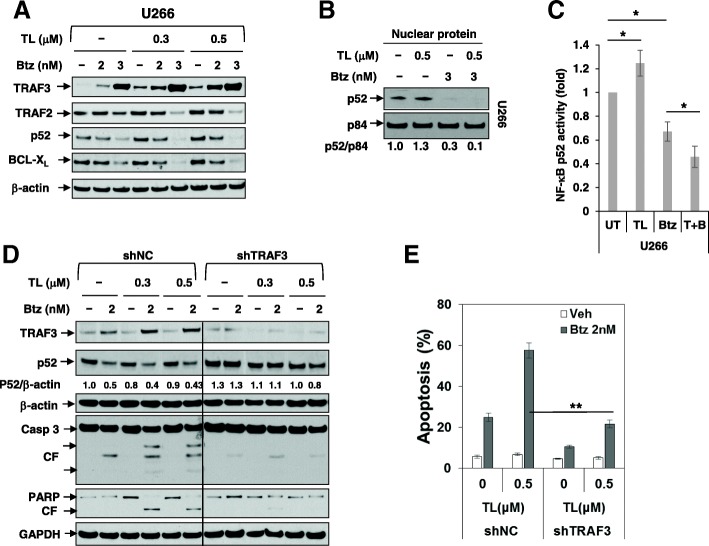Fig. 3.
Upregulation of TRAF3 plays a functional role in TL/Btz-induced apoptosis. a U266 cells were treated with Btz +/− TL for 24 h, after which TRAF3, TRAF2, p52, and BCL-XL were monitored by immunoblotting analysis. β-actin was assayed to ensure equivalent loading and transfer. b U266 cells were exposed to the indicated concentrations of Btz +/− TL for 16 h, after which nuclear protein was extracted from the cells. Immunoblotting analysis was then performed to monitor levels of p52. p84 was assayed to ensure equivalent loading and transfer. c DNA binding of NF-κB (p52 subunit) was determined using a TransAM assay for NF-κB activity. d–e U266 cells were stably transfected with constructs encoding shRNA targeting TRAF3 (shTRAF3) or scrambled sequence as a negative control (shNC). Cells were treated with Btz +/− TL for 24 h, after which cell death was analyzed by flow cytometry following staining with 7-AAD (e). The results shown are representative of three separate experiments. Immunoblotting analysis was carried out to monitor TRAF3, p52, caspase-3, and PARP (d). A black line separates images acquired from different regions of the same gel with identical exposures. Densitometry analysis was performed using ImageJ. Values indicate fold-change of p52 versus untreated control (arbitrarily set as 1.0), after normalization to β-actin. CF, cleavage fragment. β-actin and GAPDH were assayed to ensure equivalent loading and transfer. *P < 0.05; **P < 0.01

